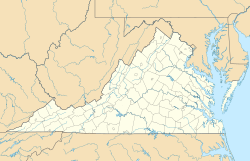Hungry Mother State Park Historic District | |
 A lake in the Park | |
| Nearest city | Marion, Virginia |
|---|---|
| Coordinates | 36°52′52″N81°32′05″W / 36.88111°N 81.53472°W |
| Area | 3,334 acres (1,349 ha) |
| Built | 1933 |
| Architect | Myers, E.L.; et al. |
| Architectural style | Late 19th and early 20th century American movements, modern movement |
| NRHP reference No. | 07000303 [1] |
| VLR No. | 086-0015 |
| Significant dates | |
| Added to NRHP | April 12, 2007 |
| Designated VLR | June 8, 2006 [2] |
Hungry Mother State Park is a state park in southwestern Virginia. The park's main feature is a 108-acre lake with a sandy beach. [3] Opened in June 1936, Hungry Mother State Park is one of the six original Virginia state parks built by the Civilian Conservation Corps in the early-mid 1930s.



